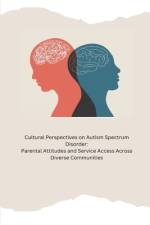av Kelda Earleen
397
Prevalence rates for autism spectrum disorder (ASD) suggest rates continue to increase, withrecent data indicating 1 in 68 children diagnosed with the disorder. Interventions may provebeneficial for both the core symptoms of the disorder and related deficits, although data indicatethat effects are stronger with early intervention (e.g., prior to four years old). Unfortunately, many children are undiagnosed until they are school age. Additionally, a number of findingsindicate that in comparison to Caucasian children, African American children receive an ASDdiagnosis later and less often. The current study examined the role of race/ethnicity on 119mothers' knowledge about autism spectrum disorder, interpretation of symptomology consistentwith ASD (e.g., labeling the child, level of concern, helpful services), attitudes towards mentalhealth services, and trust in providers. Participants were exposed to a vignette of a childdisplaying typical developmental behavior, mild ASD symptomology, or moderate-to-severeASD symptomology. Participants indicated their perception of the child's behaviors either asindicative of normal development, a medical disorder, a developmental disorder, an intellectualdisorder, or an emotional disorder. Participants then completed measures of ASD knowledge, help seeking attitudes, and provider stigma. In comparison to Caucasians, African Americansdisplayed less ASD knowledge, were less able to identify a child with ASD symptoms as havingthe disorder, and held more biases toward medical clinicians. Inconsistent with previous studies, racial/ethnic differences were not found for attitudes of mental health stigma and help seekingintentions. Implications of findings are discussed


